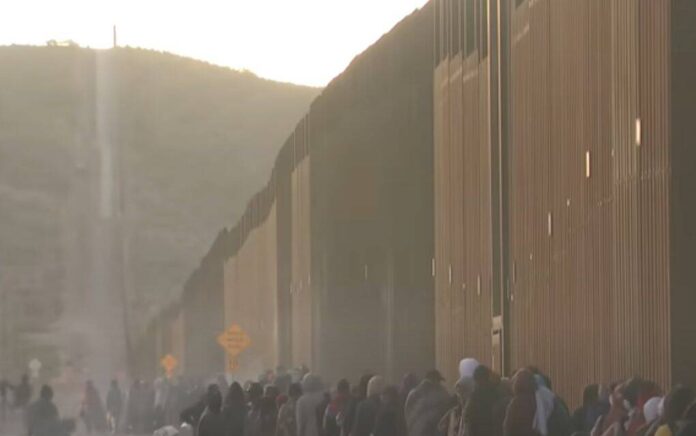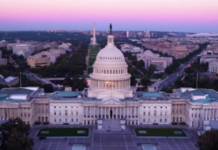
America has been under attack for years. Our borders are the laughingstock of the world.
But now Homeland Security just made a bombshell announcement about the southern border.
DHS Unveils Comprehensive Border Security Blueprint
The Department of Homeland Security outlined its forward-looking Smart Wall initiative for the U.S.-Mexico border on Friday, featuring 1,422 miles of fencing—more than twice the existing coverage—supplemented by advanced sensor systems for the terrain too challenging for physical barriers.
Construction will commence at the Pacific in San Diego, extend with minimal gaps to the western boundary of Texas’s Big Bend region, resume northwest of Laredo, and conclude near Brownsville on the Gulf of Mexico.
Customs and Border Protection, responsible for border operations, announced $4.5 billion in fresh contracts to launch the project.
This initial funding, drawn from the multibillion-dollar provisions in President Trump’s One Big Beautiful Bill, supports 230 miles of additional fencing alongside 400 miles of roads and technological upgrades.
CBP also introduced a refreshed designation, shifting from the prior wall system to the Smart Wall.
“For years, Washington talked about border security but failed to deliver. This president changed that,” CBP Commissioner Rodney Scott said. “The Smart Wall means more miles of barriers, more technology and more capability for our agents on the ground. This is how you take control of the border.”
Accelerated Buildout and Environmental Measures
To expedite progress, Homeland Security Secretary Kristi granted waivers of environmental regulations for wall segments in southern California and New Mexico.
The barrier project stood as a cornerstone of Trump’s 2016 platform, advancing substantially during his initial tenure with 458 miles of fencing erected.
Biden’s 2020 victory halted the effort, canceling planned extensions and leaving unfinished roads and tech on hundreds of miles of existing structures.
Trump’s return to office last year brought renewed commitment to completion, detailed in Friday’s figures.
As of January 20, only 702 miles of the 1,954-mile border featured any fencing or barriers—roughly 36%.
Under the current blueprint, coverage will reach 1,422 miles, approaching 73%.
The balance of 532 miles—primarily in western Texas’s Big Bend—proves too steep or isolated for walls and will rely on detection technologies, according to CBP.


















